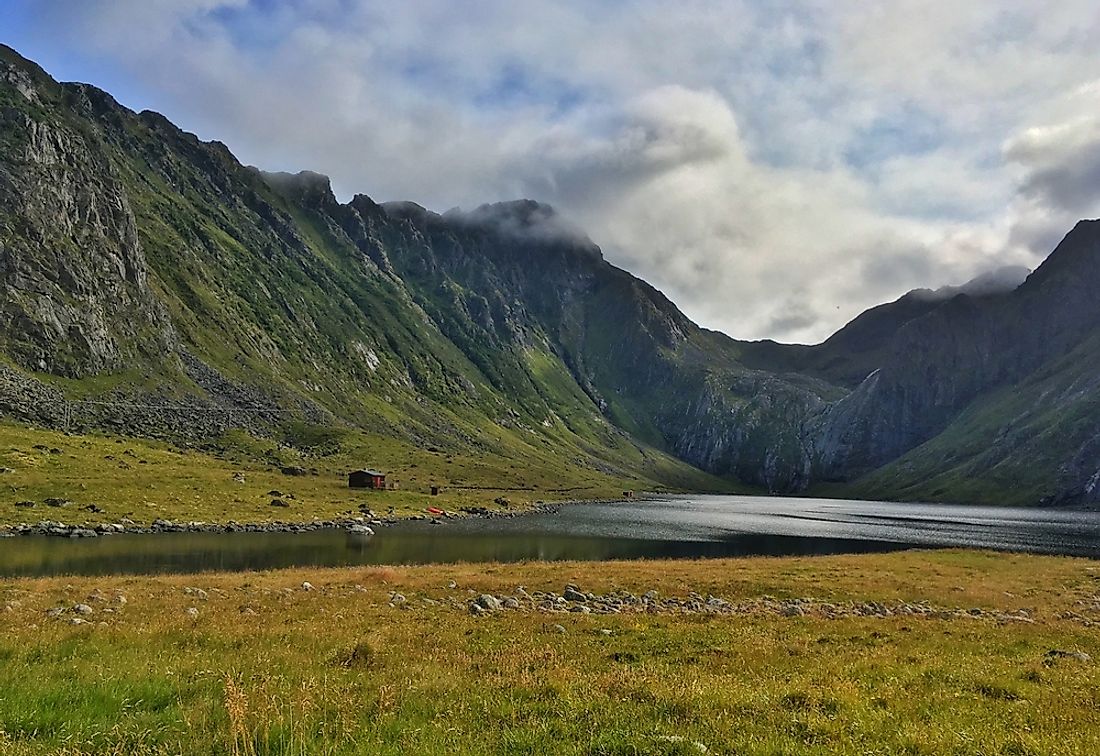What is a Strandflat?

- Strandflat a landform consisting of a flattish erosion surface on the coast and near-coast seabed.
- They are typical of the Norwegian coast.
- They exist in other high-latitude areas around the Arctic Circle.
In terms of coastal geography, a strandflat refers to a land form comprised of relatively flat land on the coast, formed from erosion. A strandflat is also found close to the sea bottom. A strandflat is not of uniform flatness and the local terrain of a strandflat can vary. For this reason, judging the altitude of a strandflat is difficult. A strandflat's altitude can vary from 40 metres below sea level to 30 metres above sea level. This can result in situations where coastlines are not uniform. In some coastal areas, skerries (small, rocky islands with no room for human settlement) are found where strandflat's exist. Peninsulas are embayments and are also found where strandflats exist. In terms of flatness, a strandflat is relatively flatter land compared to the land that surrounds it, such as mountainous areas.
<strongStrandflats </strong
A strandflat is a coastal landform that is commonplace in the country of Norway. Strand literally means "beach" is Norwegian. Norway is not the only place where strandflats can be found. This land form is also found in western Scotland, coastal Alaska, South Shetland Islands, Svalbard, and Greenland. They can also be found in high latitude areas.
Where Do Strandflats Come From?
The strandflat is a much-studied coastal land form. This is the most studied coastal land form in the country of Norway. However, an agreement has not been reached on how it's formed. This is despite the term being used as far back as 1894 by Norwegian geologist Hans Reusch. There have been several theories to explain the origins of the strandflat.
According to Reusch, strandflats formed as a result of marine abrasion that occurred prior to the event of glaciation. Reusch would also add that non-marine erosion contributed to the formation of the strandflat. It was also proposed that the strandflat preceded the fjords in Norway.
Arctic explorer Fritjor Nansen shared a consensus with Hans Reusch and both agreed that marine influences contributed a major factor in forming strandflats. However, Nansen would theorize that frost weathering was a major factor in creating the strandflats. The theory of marine abrasion was considered null and void by Nansen. His reason for proposing this was due to strandflats being located in areas where they were protected from large ocean waves. He also argued that strandflats were formed after the fjords, and not prior to as Reusch theorized.
Another Norwegian geologist, Olaf Hollendahl, proposed that strandflats had glacial origins. His son, Hans Hollendahl, would take his father's theory even further. He, and another geologist, E. Larsen, would propose that strandflats have their origins in the Quaternary glaciation period in combination with frost weathering. According to this theory, frost weathering contributed to loosening the sediments and sea ice transported materials loosened by frost weathering, thus contributing to the relatively flat land surface. Tomod Klemsdal would add another contribution to the glacial theory. According to him, cirque glaciers likely had a role in making strandflats wider and more level.
The latest theory that has been contributed to how strandflats were formed came from a 2013 publication by The Norweigan Journal of Geology. The hypothesis put forward Odleiv Olsen and fellow colleagues was that strandflats could have originated from a peneplain in the Triassic age. It could have been brought to the surface, and then flattened again through weathering during the Pliocene and Pleistocene epochs.
Strandflats and Humans
Regardless of how strandflats were formed, there is one consensus that can be reached. Strandflats have proven to be beneficial for humans, especially in Norway. Norway has a rugged, fjord-clad coastline. This makes it difficult to find places to build settlements. The strandflats of Norway have given people places to settle and for agriculture to grow. These land forms have more room for settlement and farming. In Norway, the strandflat is considered an important cultural landscape.







